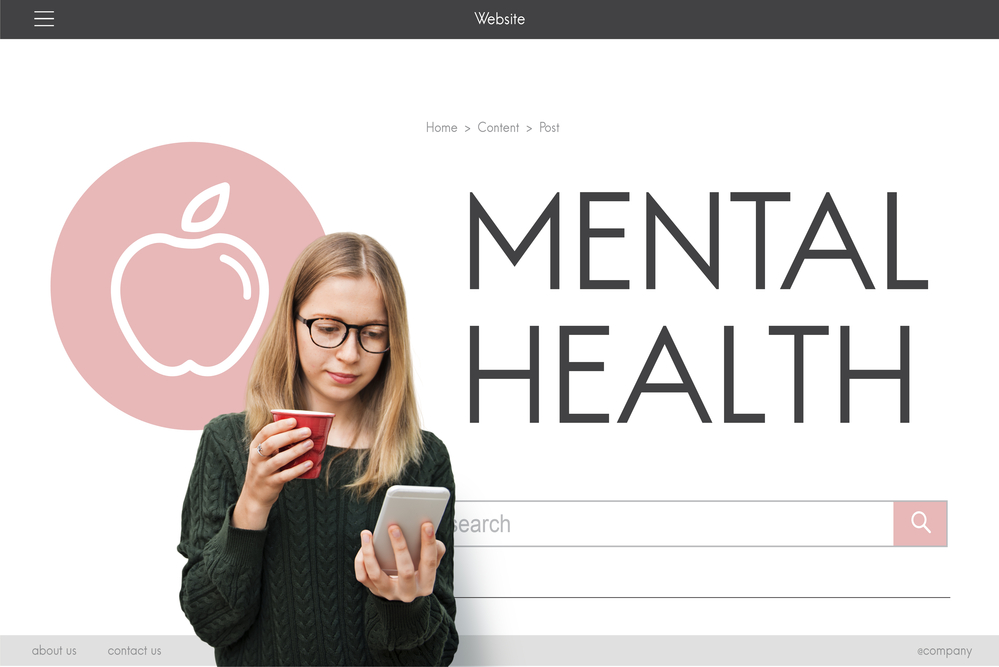A recently published opinion piece in The Lancet Psychiatry provides a brief update of challenges seen in services specific to the at-risk mental state (ARMS) and provides recommendations for developing these services. These programs for youth experiencing subthreshold psychotic symptoms offer a variety of services, often including assessment and monitoring, individual therapy, group therapy, family therapy, vocational/educational coaching, and psychiatry when appropriate. As research grants most commonly fund these programs, often the services are free of charge to youth and their families.
ARMS-specific clinics and research programs were first outlined 25 + years ago and have since provided significant advances in identifying factors amenable to intervention, steps towards predicting psychosis, including the development of various risk calculators, and advances in treatment for individuals experiencing subthreshold psychotic symptoms. In addition to notable advances and progress, critiques and critical reflections of existing programs have been made.
The article was authored by several leading figures in the study and treatment of psychotic disorders. Dr. Shah is an associate professor in the Department of Psychiatry at McGill University, Dr. Jones is a leading researcher in early psychosis and assistant professor in the School of Social Work at the University of Pittsburgh, Dr. Van Os is a professor in the Department of Psychiatry at Maastricht University Medical Centre, Dr. Gülöksüz is associate professor of psychiatry at the Department of Psychiatry and Neuropsychology at Maastricht University Medical Centre, and Dr. McGorry is a renowned psychiatrist and professor of Youth Mental Health at the University of Melbourne.
“A [youth mental health]-specific reconfiguration of mental health services—one that moves beyond diagnoses and recognizes syndromes along with other features—will require considerable restructuring and a substantial commitment from funders that addresses the needs of individuals at all levels of care,” the authors write.
 The authors of the present opinion piece provide a brief background of the advent and progress of research programs and clinical services for youth experiencing risk for psychosis (i.e., clinical high risk for psychosis (CHR-P), ultra high risk (UHR), or at-risk mental state (ARMS)). They argue that while this movement has made many gains, challenges to be reflected on as the field moves forward have emerged.
The authors of the present opinion piece provide a brief background of the advent and progress of research programs and clinical services for youth experiencing risk for psychosis (i.e., clinical high risk for psychosis (CHR-P), ultra high risk (UHR), or at-risk mental state (ARMS)). They argue that while this movement has made many gains, challenges to be reflected on as the field moves forward have emerged.
Namely, the authors highlight that the growth of these programs has inadvertently reinforced the notion that the development of a first episode of psychosis is unidimensional, always resulting from a worsening of positive psychotic symptoms (e.g., hallucinations and delusions).
The authors point out that the first episode of psychosis is heterotypic (e.g., it can present without a prodromal period or be preceded by a mood disorder). This shift, they argue, is supported by the high rates of comorbidity and varying outcomes seen in ARMS patients, such as developmental or non-psychotic disorders, clinical improvement, not developing a psychotic disorder, or continuing to experience subthreshold symptoms and suboptimal functioning.
The authors acknowledge previously made critiques of ARMS services, such as (1) these services have poor predictive validity, (2) interventions are ineffective, (3) specialized clinics risk harming self-identity, and social/familial perception of youth, (4) they contribute to the pathologization or over-medicalization of distress, (5) concerns for exposure to unwarranted psychiatric medications, and (6) the underrepresentation and lack of participation of individuals from disadvantaged groups.
The authors argue that prevention efforts should move beyond ARMS-specific clinics and be made available for all those who need care, including those with ARMS/CHR-P/UHR and those with a non-psychotic disorder. They point out a need for a more nuanced understanding of illness trajectories. To more accurately capture rates of transition to psychosis, programs should identify help-seeking individuals from the full spectrum of early-stage symptoms and presentations, not just early-stage psychotic symptoms (e.g., subthreshold hallucinations).
The authors highlight that moving towards broad, diagnostically agnostic services for early-stage mental health conditions is consistent with the developing understanding of clinical stages (i.e., that development of mental illness is fluid and not linear). The benefits of providing these early intervention services within general youth mental health settings include that all who present with ARMS/CHR-P/UHR symptoms can be quickly connected to evidence-based care, those who develop psychotic disorders can be efficiently connected to appropriate services/treatments, and these settings are less stigmatizing than ARMS-specific services.
The authors summarize relevant implications for service settings. They propose that instead of having diagnostic-specific risk syndromes, programs for youth aged 12-25 would be ideal as this presents a crucial period for transdiagnostic mental illness risk. Additionally, these centers should first provide monitoring and non-specific interventions, followed by a transition to evidence-based treatments if/when later stage illness develops (e.g., first episode of psychosis). The authors propose moving to a framework beyond diagnostic-specific service structure to “integrated early-stage services for mental health that are organized around individual needs and outcomes.”
“This approach would still recognize the fluid, protean nature of early-stage syndromes and their variable trajectories and pluri-potentiality, without being defined solely by them. “
They imagine these programs would be best situated within primary and community care and would “shift the focus” towards delivering the interventions across a range of syndromes. A trajectory-based approach would also reduce treatment delays by having quick access to specialized providers.
Further, the authors emphasize that any mental health service program would need to include the perspectives of service users and their carers. They also acknowledge that youth at the highest risk of poor mental health outcomes are often the least likely to be help-seeking but conclude that ways to meet the needs of this underserved population are unclear. One proposed structure for these programs is having the treatment team organized around one central clinician skilled in case management, building relationships, delivering “transyndromic” interventions, and connecting youth to relevant resources.
The authors suggest the present challenge for ARMS programs is to integrate with early-stage syndromes, recognize varying illness trajectories and plurpotentiality across early-stage mental illness, and that prevention efforts for psychosis should be provided so that they are available to a broad range of early-stage syndromes and presentations. The authors acknowledge that developing such programs would require building knowledge about what combination of variables is relevant to predicting outcomes that would inform moving individuals between stages of treatment.
Lastly, they highlight that a one-size-fits-all approach in designing such programs would not be sustainable (e.g., concerning varying providers available within one program), encouraging technology and adaptations to promote equity and access.
****
Shah, J. L., Jones, N., van Os, J., McGorry, P. D., & Gülöksüz, S. (2022). Early intervention service systems for youth mental health: integrating pluripotentiality, clinical staging, and transdiagnostic lessons from early psychosis. The Lancet Psychiatry, 9(5), 413-422. (Link)















The authors are getting completely lost in their own writings. I was a “chronic schizophrenic” until I stopped strong psychiatric drug treatment.
I was climbing the walls when I stopped strong psychiatric drugs but NO longer disabled.
Luckily I was able to find strategies to deal with my drug withdrawal distress, and remain in the real world.
Lots of Professionals going around in circles were NOT required.
Report comment
ATTENTION RESEARCHERS:
I attended a Stress Management Course at Covent Garden Central London, provided by the “Brahma Kumari Spiritual Organization” – some years ago.
The Brahma Kumari Lady said that when we believe we are upset about an incident or something happening to us – it is NOT the incident itself that upsets us but a previous incident from the PAST that has been triggered by the present day incident. And the way to deal with the upset is to come to terms with it.
Then the Lady said “..you see in a sense we are all Schizophrenics…” – this is TRUE because once the feelings are resolved – the incident is NO longer too important!
Applying this ‘Principle’ provided me with one of the means by which I came off the (below) medication – and regained my independance:-
THE IMPACT OF FLUPHENAZINE DECANOATE DISCONTINUATION –A RETROSPECTIVE COHORT STUDY
(Copy and google the Heading for the Study)
It’s clear from this (above) study that it is nearly impossible even with access to other medications – to withdraw from this drug.
But this Approach is a very simple and straightforward Approach.
Report comment
The same ‘Stress Management’ Advice is available in ‘Buddhism’, in ’12 Step Fellowship’, in generalised ‘Hinduism’ and from the ‘Stoics’.
Report comment
Reading this article proves the phrase, “Insanity is doing the same thing over and over again and expecting a different result”.
At first glance, this article had me asking myself the absurd question, “Is it possible psychiatrists and their cohorts are finally seeing the error of their narrow minded, coercive, and authoritarian ways?” But then a jolt of good ol’ common sense brought me back to reality, reminding me that whatever changes psychiatrists and their cohorts claim to make are just a delusion – THEIR delusion.
Paragraph 7 from the top is refreshing in that shows some budding awareness of their much-too-late realizations of how ineffective and harmful their typical protocols have proven to be, as the author states, “The authors acknowledge previously made critiques of ARMS services, such as (1) these services have poor predictive ability, (2) interventions are ineffective, (3) specialized clinics risk harming self-identity, and social/familial perception of youth, (4) they contribute to the pathologization or over-medicalization of distress, (5) concerns for exposure to unwarranted psychiatric medications, and (6) the underrepresentation and lack of participation of individuals from disadvantaged groups”.
But the bulk of the article reveals their new proposals are just more of the same, except now they’re looking for MORE ways to cast their ever widening net, because (Heavens to Betsy!) they’ve finally realized people on to their crap –
Report comment
Parents need to know that psychiatrists and their cohorts are Chicken Littles who live by the phrase, “Get ‘em when they’re young,” and are singularly devoted to making psychiatry evermore ubiquitous –
Report comment
Parents need to know that their kids are targets for the mental health industrial complex –
Report comment
Parents need to know that psychiatry’s “future directions” is code for “ how do we make these kids into psychiatry’s lifelong patients” –
Report comment
Psychiatrists must realize that people are onto their crap, AND THAT THEIR CRAP DOESN’T WORK, or else they wouldn’t bother looking for “future directions”.
Who knows? Maybe they’re finally running scared, as they should, as today the Internet shows people other ways to cope.
One can only hope –
Report comment
Psychiatry’s “Future Directions”???
What a terrifying thought –
Report comment
Hey there Psychiatry! Why not try this for your “future directions” –
GO TO HELL –
Report comment
LOL!, LOL!, LOL!, LOL!….you’re funny when you’re CORRECT, my good friend Birdsong!….
But I have a slight correction, – psychiatry can NOT “go to hell”, because
PSYCHIATRY IS HELL….
Report comment
Thank you for correcting me, Bradford –
You’re absolutely right!
Report comment
In other words, when someone needs the most help to not be thrown into the system, then the “ARMS” system makes sure they end up being lost. It’s most predatory to the people who need to NOT be treated in such a manner.
This whole paragraph, for example: “The authors point out that the first episode of psychosis is heterotypic (e.g., it can present without a prodromal period or be preceded by a mood disorder). This shift, they argue, is supported by the high rates of comorbidity and varying outcomes seen in ARMS patients, such as developmental or non-psychotic disorders, clinical improvement, not developing a psychotic disorder, or continuing to experience subthreshold symptoms and suboptimal functioning.”
Points out that those who have the most need to understand what’s going on, because it doesn’t go away, and thus needs an approach which is based on understanding rather than discriminatory diagnosis, that they are MOST likely to be thrown into a system which will prevent them from understanding. By calling it something that it’s not. And it points out their inability to relate to the natural emotional-spiritual-cognitive symbolism or matrix of associations that need legroom, and need someone that can help a person create the matrix to understand themselves: the person’s own history, their own experiences, the associations they have, how things effect and trigger them, and the rest of it. To call a person ARMS who has a greater need, because they’ve experienced more of what society doesn’t acknowledge as effecting a person, and thus need an approach that acknowledges that rather than there’s more excuse to deny it using “ARMS”: that is simply fixated on an ideology regardless of whether it works, instead looking for a way to make out it would when out of desperation it looks like something more “critical” needs to be used. That’s fear based, not reality based. Locking people up, drugging them so their whole response system is suppressed, making them and the rest of society paranoid about their own responses using ARMS terminology….
WHY do I have to look up what ARMS is other than it’s some jargon used!? There’s no explanation of this ARMS jargon in the whole article, as if everyone knows this is something because there’s a extraction for it. A cozy acronym. And the whole rest of the jargon used.
What is “EYE!?” Every Yawning Exactitude as in there they go again with their pretensions.
There must be some immense collects of EYE somewhere in another dimension under the menu “bait used for exploitation.”
Report comment
There are no leaders in psychosis.
Psychosis IS THE LEADER.
All anyone who wants to care for the psychotic should do is just BE with the psychotic.
Ah but leaders want to fix, heal, save, rescue, prove theories “right”, cajole, sell, bully, convert, change the psychotic.
And for WHAT?
For the thought leader to be awarded a prize? A thought leader who has NEVER EVER had a psychotic moment in their life?
Antipsychiatry threw out the baby with the bath water when it threw out madness. Madness IS A GREAT BIG PSYCHOTIC BABY that confounds all fixing, bullying, converting. Madness is the last place you can BE, since you cannot DO anything whilst mad BUT BE. It is the adult’s blissful escape route back to being neonatally OUT OF CONTROL. I do not mean out of of control in a plate hurling aggressive way. No neonate hurls a plate. I mean out of control in a dreamy out of this realm passive way. Hippies.
Enter the phrase…
“Don’t tell me what to do”.
There is a positive boundary establishing use of that phrase, one congruent with “freedom of choice”.
But there is also an “entitled” use of that phrase. It really means…
“Let me tell you what you have to do, not me”.
Some of the people who were eager to tell everyone to scrap the word “madness” have a wish to integrate as “normal”. It may not be their OWN notion of “normal” that they ask the mad to align with but a “consensus normal”, a “group think” normal. But any appeal to a “consensus normal” by obeying petty regulations of that consensus inadvertantly scraps an individual’s “freedom of choice”.
An individual’s “freedom of choice” will ALWAYS LOOK MAD to a tightly bonded “consensus opinion” keeping group. This is because mostly in this era “consensus” is won through “logic” and “analysis”, not fellow “feeling”.
But “freedom of choice” is mainly arrived at through “feeling”. Do you like chocolate of cough lozenges?
And because “feelings” are NOT “logic”, they seem to the casual observer to be inexplicable and “illogical” and “dreamy” and “mad”.
The psychotic are full of deeply passionate “feelings” and therefore seem “dreamy” and “inexplicable” and needing rescued and made “normal”, by pickling them in “consensus ooinion” of what “normal” SHOULD look like. A bit like saying ALL “free choices” should have a certain look. Usually a tidy, together, “logical” look.
As if saying ALL neonatals and Hippies SHOULD be calm or fixed or smiling or comprehensible or understandable. There is NO possibility that you can “freely choose” to be an anathema or inexplicable or fabulously mysterious. You and your “free choices” have to be picked though thoroughly and approved of in a group consensus way or YOU are a THEM.
THEM the mad.
After a few years of you being mocked by the “consensus opinion” lot for your “madness” being your last bastion of “freedom” you come to the conclusion that being mad is “WRONG”.
This walks you into the hideous groomed impact that says being “illogical” and “feeling” is “WRONG”.
Binning your “madness”, that is also binning your “freedom of choice” to just BE, merely because you have been told that the word “mad” links to not belonging to “consensus opinion” IS YOU STIGMATIZING YOUR OWN FREEDOM OF CHOICE to “inexplicably” make YOUR LIFE BE HOWEVER YOU CHOOSE.
On the one hand psychosis is torment and hell. On the other hand it is full of feeling and liberation. Like a neonate.
The great guru OSHO once said that if God gave him a choice of whether to go to heaven or hell he would choose to reside in hell since that would be where all the poets and musicians and philosophers and astronomers and dreamers and decadent party goers would be. I would suggest such “free spirits” were often thought abnormal and overly emotional and inexplicable and “mad” in their day.
There is nothing madder than a person who inexplicably CHOOSES the type of care they as an individual want. Whether that care is Soteria House, or a funfare, or an Open Dialogue appointment, or Jesus Christ, or Astrology, or a warm bed and bowl of soup in ye ol asylum with a fartherly or motherly protective psychiatrist to pencil notes of hope.
None of the “free choices” of care that the mad make are “WRONG”, provided that they are not bullying anyone else nor overly bullying themselves.
Barring the way some medications do seem harmful, it is NOT that specific treatment choices are bad, it is that “consensus opinion” muddies the water over what choice it says you SHOULD choose. And WHY.
There has been a lot of impute in antipsychiatry to spell out that the WHY given by “consensus opinion” psychiatry is because you are “mad” with an unpronounsible malady. Given that “consensus opinion” wants to take a swing at your “freedom of choice” by calling it “mad” and “illogical”, your impulse is to “think” that you ought to protest about being called a “them” who is “mad”. A huge effort arises to showcase how you are perfectly “logical” just like your accusers. Even more “logical” in fact. So super “logical” that no one can read your analytical articles without recourse to a glass of fizzy asprin.
In this way your antipsychiatry initiative becomes yet another overly fussy rule riddled bid for “consensus opinion”, as if that is THE ONLY OPINION that matters. The theoretical opinion, the PhD Masters degree in big long jargon opinion, the niche study in a research paper’s analysis of twenty graphs opinion. Because the bullying that is always part and parcel of “consensus opinon” always grows more and more and more ENTITLED, even in something as honourable antipsychiatry, or ANY worthwhile campaign globally. ALWAYS the push for “consensus” over “freedom of choice” must come up with endless endless torturous “logic” and “reason” as to why YOUR “free choice” to just be a BIG PSYCHOTIC BABY is “WRONG”.
It is back to the healthy phrase “don’t tell me what to do” becoming…
“Don’t tell me I cannot tell you what to do”.
There are plenty of people who enjoy belonging to “consensus opinion” because it becomes a sort of church of healing in and of itself.
I am not against it.
Increasingly though as the world fragments there are insecurities in each campaign and a pressing need to “save the world” by either “punishing” or “rescuing” everyone “wrong” or “mad” or “inexplicable” or “free”.
A lot of nationally it is centering on the idea that everyone needs rescued from a mysterious abuse that must have turned them so confoundingly “inexplicable”, or made them “overly feeling” or turned them “irrational”. And so they need mended back to the “consensus opinion” of what is best for them, for their own good, since “logic” is always for “mad” people’s own good. And so they are taught to “analyse” their childhood by going into “analysis” to stop them being “dreamy”. They must question their whole life as if THEIR ENTIRE LIFE was “WRONG”. They must pick through their previous “free choices” and cathartically come-to during mid session and progress to some mathematical eureka moment of “fixedness”.
They must “fix” their embarrassingly being a psychotic individual full of poertry and music and philosophy and wed to “consensus normal”.
An arranged marriage…
to “reason”.
To which I say this…
WHY?
Report comment
My thanks to Nijinsky for saying this regarding the ‘ARMS’ acronym, “that is simply fixated on an ideology regardless of whether it works” –
Very well said.
If only these over-educated idiots (oops! I meant “mental health professionals”) could learn to look past their own noses, they might able to see the benefits of a more hands-off approach. But – unfortunately – some people are born to be “mental health” ambulance chasers –
This article proves the only thing the Mental Health Industrial Complex is capable of doing is finding more and better ways to stigmatize people.
Can someone please tell me whatever happened to letting things run their course? Oh, I forgot – there’s no money and ego-enhancement attached to this approach for our wonderful “mental health professionals”.
Too bad they never learned to leave their “mental health” muscle-flexing at the gym –
Report comment
If only “mental health professionals” could learn TO SEE PAST THE END OF THEIR OWN NOSES –
Till Hell freezes over –
Report comment
When will “mental health professionals” learn to see past the end of their own noses?
WHEN HELL FREEZES OVER –
Report comment
OK, good and funny comments regarding the psychobabble & gobbledygook of the article….
“Over-educated IDIOTS” is MY pet phrase for all these quack shrinks….
I mean really, people, can’t you guys in the article HEAR YOURSELVES?….
“at risk mental state”? WTF? How do they know it’s not an “at risk mental nation”, or “at risk mental territory? “At risk mental province”? Why “state”?….
OMG!, OMG!, OMG!….LOOK OUT!, it’s CHR-P, & UHR, & ARMS!….
Why not call it, “CH2-R3-PAMS”?….isn’t that the same thing as CHR-P +UHR + ARMS?….
The MATH PROVES it’s the same….
Really, no personal insult intended to Bernalyn Ruiz, MiA writer of the article above, reporting on the dying gasps of a failed “mental health system”.
Let’s give psychiatry the respect it deserves. It’s ACADEMIC BULLSHIT….
….and psychobabble & gobbledygook….
Report comment
“…the dying gasps of a failed “mental health system” –
I hope this is really what’s happening –
(Duplicate Comment)
Report comment
Bradford –
“…the dying gasps of a failed “mental health system” –
I hope this is really happening –
Report comment